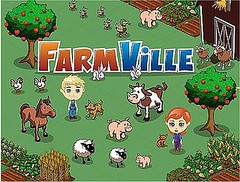Twitter’s Plan to Analyze 100 Billion Tweets
 Friday, February 19, 2010 at 7:41AM
Friday, February 19, 2010 at 7:41AM  If Twitter is the “nervous system of the web” as some people think, then what is the brain that makes sense of all those signals (tweets) from the nervous system? That brain is the Twitter Analytics System and Kevin Weil, as Analytics Lead at Twitter, is the homunculus within in charge of figuring out what those over 100 billion tweets (approximately the number of neurons in the human brain) mean.
If Twitter is the “nervous system of the web” as some people think, then what is the brain that makes sense of all those signals (tweets) from the nervous system? That brain is the Twitter Analytics System and Kevin Weil, as Analytics Lead at Twitter, is the homunculus within in charge of figuring out what those over 100 billion tweets (approximately the number of neurons in the human brain) mean.
Twitter has only 10% of the expected 100 billion tweets now, but a good brain always plans ahead. Kevin gave a talk, Hadoop and Protocol Buffers at Twitter, at the Hadoop Meetup, explaining how Twitter plans to use all that data to an answer key business questions.
What type of questions is Twitter interested in answering? Questions that help them better understand Twitter. Questions like:
















 If real farming was as comforting as it is in
If real farming was as comforting as it is in 